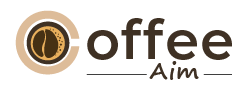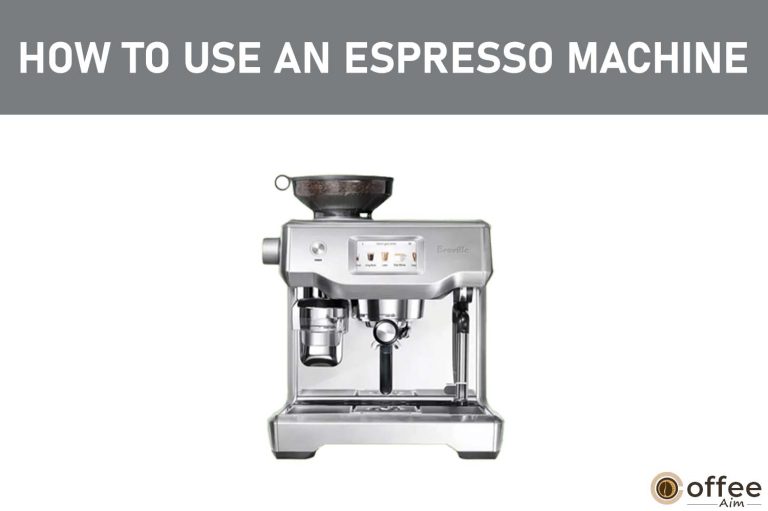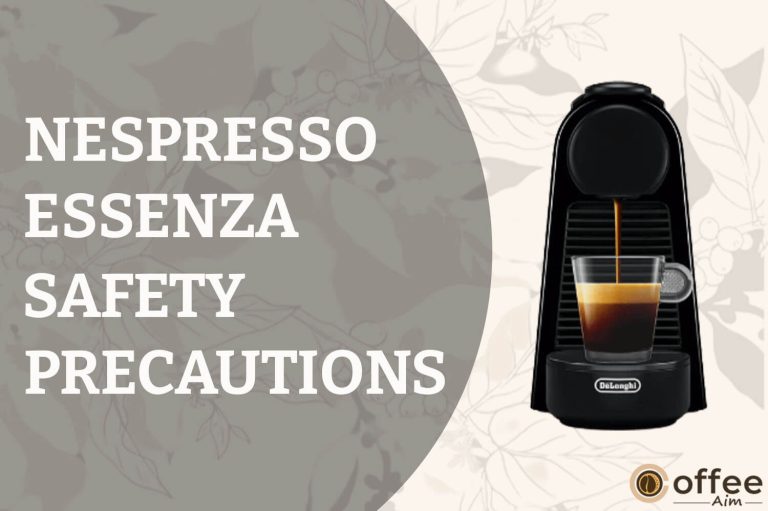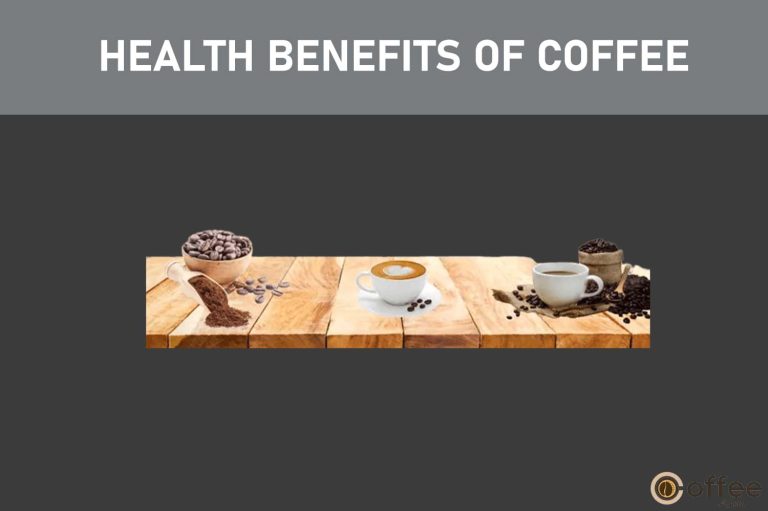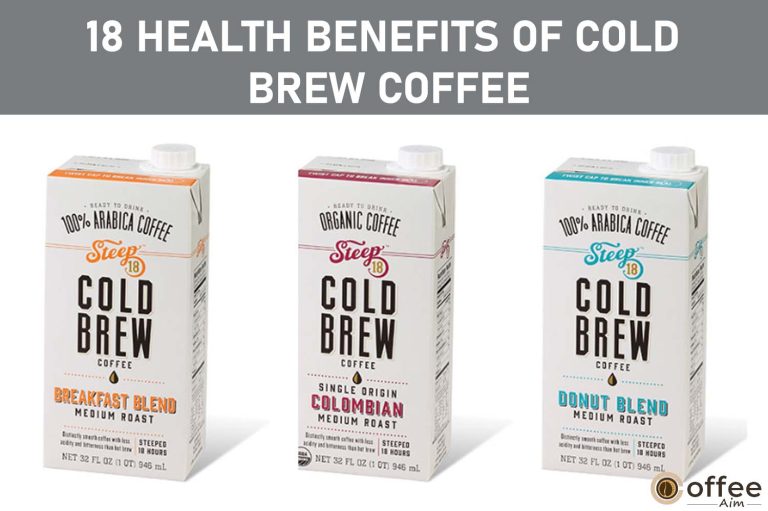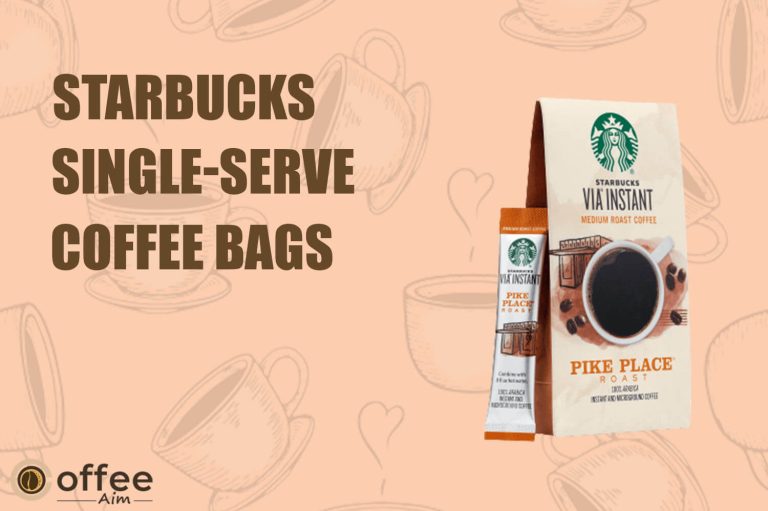
Quick Navigation
This article is all about the brewed coffee drink; visit Coffee bean and get information about the seed from which it is made. Visit Coffea and get information about the plant. Visit coffee (disambiguation), and get information for other uses of coffee.
Three things are required to brew coffee beverages: coffee beans, a coffee machine, a burr grinder, some coffee accessories and coffee brewing skills. But if it is morning and you are in a hurry to go to college or office, you would require a Keurig coffee maker, a Nespresso, Dolce Gusto, Tassimo, or a Lavazza coffee machine, some coffee pods or capsules compatible with your machine, and your equipment is ready. You insert your coffee pod in the machine, place a cup down the faucet, push a button; your desired drink will fill the cup. Your coffee drink has been completed!
Let’s see other aspects of coffee.
How Old is the Name of Coffee?
Coffee is a beverage that has been around for centuries. The first mention of the word coffee in English was in 1582 when it entered through Dutch from Turkish to Arabic. Arab lexicographers say the word ‘qahwa’ comes from deriving verbs meaning “to lack hunger” because people drank this drink to suppress appetite during fasting times or if they were sick with fever.
A coffee pot is a device that was originally used for making and boiling water for brewing coffee; before the development of percolators, it was introduced in 1705. The term “coffee break” first appeared in print around 1952 when it was printed as an example sentence in glossy magazine advertisements by the Pan-American Coffee Bureau.
Some Popular Words Use as Coffee Synonyms
Brew, Café, Café noir, Decaf, Decoction, Demitasse, Forty weight, Hot stuff, Ink, Jamocha, Java, Java Lava, Joe, Liquid Gold, Mood Mover, and a lot of more words they use for coffee.
Some Popular Slang Words for Coffee
Battery acid, Bean Juice, Brain Juice, Caffeine Infusion, Cuppa, Cupped Lighting, Dirt, Go Juice, High Octane, Jitter Juice, Leaded, Liquid Energy, Morning Jolt, Rocket Fuel, Unleaded, Varnish Remover, Wakey Juice, Worm Dirt, and a lot of more slang words they use for coffee.
Coffee Cherry to Cup of Coffee — A Little Journey
Coffee is a beverage brewed from roasted coffee beans, the seeds of coffee cherries: a berry-like fruit of the coffee cherry tree. These valuable little buggers are separated from the coffee fruit to produce an unroasted yellow-green product: green coffee beans – a stable raw form that hasn’t been turned into something consumable just yet! The next step in this process sees those same cherries undergo roasting, transforming them into what we know as “coffee beans”. Grinding up fine particles and steeping hot water before filtering out for your morning fix-I think you can guess where I’m going with this by now.
But wait, there’s more.
Note: The color of green coffee beans varies from greyish-green to yellow-green, depending on the regions where they come from.
Coffee Roasters
When coffee was discovered, it was roasted, like corn kernels in some villages nowadays. An open iron frying pan was placed on the open fire stove. The pan was heated by adding sand or salt. When the sand or salt was well heated, coffee beans were added and roasted. It was the oldest method of roasting coffee beans. They roasted coffee beans by cylindrical coffee rosters in Cairo, Egypt, in the seventeenth century. There are all kinds of coffee roosters in the market now. You can buy green coffee beans from the market and roast them at home with your own hands.
Coffee and Caffeine
Caffeine is everywhere! The world’s favorite psychoactive stimulant has become an even greater concern in today’s society. Yes, the coffee and caffeine relationship goes beyond stimulating physical performance. Coffee has several mental health benefits, such as improving concentration and memory function (though this effect may be short-term).
There is evidence that drinking too much coffee can cause some negative side effects for your cardiovascular system– Consuming too much caffeine can be abusive for you, and you would be more and more depending on it that can lead you to caffeine intoxication, which puts you at risk for premature and unnatural death.
Whether Coffee Consumption is Beneficial or Harmful to Health
Coffee is safe within the range of usual intake. Clinical research indicates that coffee is more likely to benefit health than harmful if its consumption is between three to four cups a day. There are minimal to no health risks at three to four cups a day. Robust randomized controlled trials are needed before we can make any conclusions about coffee’s effects on our bodies; however, outside pregnancy, there does seem to exist some evidence that suggests this beverage may not pose significant risks if consumed cautiously. Women who have an increased chance of breaking bones should probably avoid drinking caffeinated drinks like these due to their weakened bone strength over time.
Is Decaf Coffee Beneficial for Health
Decaffeinated coffee is a delicious and healthy alternative to the traditional caffeinated variety. It’s very similar in taste, appearance, smell; however, it does not contain any of your average joe’s favorite little beans-the caffeine! While some people may worry that drinking this type will give them headaches or make them jittery (no pun intended), there isn’t evidence suggesting such fears are true as those who drink decaf seem just fine without these side effects normally associated with higher levels of caffeine intake like general irritability/anxiety, etc.
Millennials Turn to Decaf
National Coffee Association (NCA) reported in 2017 that decaf consumption in the US is led by 18-24-year-olds (19%), while 25 to 39-year old’s come in third place. They also led this trend two years ago with 20%. In other words: want your café or restaurant’s target audience? Decaffeinated coffee could help you do exactly that!
In 2017, 66% of consumers surveyed agreed it was important to limit caffeine intake–and among those between ages 25 and 39 who are looking for less stimulation from their morning cup o’ joe but still need some stimulating effect such as energy boost without feeling jittery – decaff can be an excellent choice.
Coffee is One of the Most Popular Drinks in the World
The coffee industry is a multi-billion dollar and growing business. It’s grown by 50% in just two decades! This growth can be attributed largely to the millions of smallholder farmers who produce this popular beverage worldwide. Coffee-producing countries still export the bulk of their produce, earning around USD 20 billion in exports a year. The annual income for coffee as an industry exceeded $ 220 Billion (that’s over 11 times more than what coffee-producing countries receive), with growing demand coming from not only traditional markets like Europe and Japan but also emerging economies such as China who are looking to replace imports taken up by its production.
Coffee is an essential part of many people’s lives. The number of dependent families on coffee is at least 100 million. They are from input providers to farmers, traders, processors, roasters, distributors, marketers, packaging suppliers, baristas, and even those who deal with the disposal and reuse or recycling of coffee waste. The global coffee market is steadily growing at an annual rate of 2.2%, fueled by consumers in developing countries consuming more than ever before.
Coffee Brewing Methods
Coffee is a versatile drink that can be prepared in many different ways. You can prepare it as an espresso, French press or caffè latte, etc., and enjoy the rich flavor with foam on top–or use canned coffee already brewed for convenience sake!
Although some people like their coffee cold or iced for added versatility, mostly it tastes better when it’s hot! Sugar and milk may also help cut down on the bitterness of this bitter brew according to taste preference. Cakes are often served with desserts such as doughnuts.
Most Popular Coffee Drinks
The coffee drinker’s list is endless, with new, innovative flavors popping up every day. Speciality coffee shops, modern coffeehouses, reliable coffee chains are rising, and classic cafes are everywhere you look! From lattes to cappuccinos – there are so many options for your pick-me-up in this caffeinated world we live in today. Black Coffee, Cafe Au Lait, Coffee and Cream, Espresso, Ristretto, Lungo or Long Shot, Americano, Red Eye, Macchiato, Cortado, Cappuccino, Flat White, Latte, Mocha Latte, Caramel Latte, Dirty Chai Latte, Iced Coffee, Iced Espresso, Cold Brew, Nitro Cold Brew, Iced Latte, Iced Americano, Espresso and Tonic, Espresso and Lemonade, Frozen Blended Latte, Espresso Martini, Cold Brew and Whiskey, Bourbon Latte, Irish Coffee, Coffee Old Fashioned, Hot White Russian are some popular coffee drinks for your pick-me-up.
Coffeehouse, Coffee Shop, or Café
“Kiva Han” opened in Constantinople in 1475. It was the world’s first coffee house/shop.
A coffee shop, coffeehouse, or café is where you can go to get your caffeine fix. Whether it’s an espresso, latte, cappuccino, or flat white- they have what every one needs! Some people have interest only in cold drinks, such as iced coffee or iced tea, others in non-caffeinated beverages, while some enjoy sitting down with friends over some light snacks like muffins and pastries.
Cafés in Europe are places where you can get a coffee or an alcoholic drink. Some may also serve food, like light snacks and sandwiches! Coffeehouses come in all shapes and sizes, with some large multinational corporations. Some chains operate on a franchise business model, with numerous branches across various countries worldwide, while others may only have one branch across your town or city.
Coffee Travel —- Yemen to Europe
The earliest credible evidence of the drinking coffee in Sufi shrines appears from modern-day Yemen around 1500 AD, where they used to brew and roast it like we do today. The Yemeni procured their beans through trade routes that stretched all over Africa, including Somalia; however, by the 16th century, this brewed drink had reached much farther east than just Arabia or Persia – reaching Istanbul (Turkey) within 50 years later on. It includes Europe as well!
Types of Coffee Beans
There are four primary types of coffee beans: Arabica, Robusta, Liberica, and Excelsa. Arabica has a sweeter, more delicate flavor with less acidity than Robusta. Still, they have been cultivated for generations in Africa and grown at lower altitudes, making them easier to harvest sustainably. Robusta coffee beans are second in popularity and consumption. These robust coffees, the most popular coffee beans across Europe, the Middle East & Africa, make up about half of total world bean production for this beverage type!
The coffee beans from Liberica are a rare treat, with their aroma similar to fruit and flowers. The flavor is described as having a “woody” taste of tart-like citrus fruits. Excelsa only makes up for 0-2% of all world’s production but boasts lots more having a tart, fruitier flavor character than most coffees.
Coffee cultivation
Arabica coffee is the most popular variety in Brazil, Colombia, and Indonesia. It accounts for about 65% of all world production, with Robusta accounting for 35%. Coffee plants are cultivated in 70 countries with an annual global production worth over $220 Billion! It only makes sense that Brazil would be at or near the top of this list- they produce 35% of all beans worldwide by themselves (and some say even more)!
Coffee Exporting Countries
Here is the list of the top 15 coffee exporting countries during 2020.
- Brazil: US$5 billion (15.9% of total coffee exports)
- Switzerland: $2.9 billion (9.1%)
- Germany: $2.6 billion (8.2%)
- Colombia: $2.5 billion (8%)
- Vietnam: $2.3 billion (7.5%)
- Italy: $1.7 billion (5.4%)
- France: $1.5 billion (4.8%)
- Honduras: $1.1 billion (3.5%)
- Belgium: $904.8 million (2.9%)
- Indonesia: $821.9 million (2.6%)
- Netherlands: $810.7 million (2.6%)
- Ethiopia: $795.8 million (2.5%)
- United States: $785.6 million (2.5%)
- Guatemala: $653.3 million (2.1%)
- Peru: $640.7 million (2%)
The top 15 countries shipped over 80% of global coffee exports in 2020. Among these, the fastest-growing exporters were France (up 22.5%), Honduras (up 16.4%), Switzerland (up 13.9%), and Brazil (up 9.7%).
Only 6 exhibited declines, while 1 had no change or growth rate data available for 2019 and 2020 combined to less than 10 observations per country).
You may be disappointed to learn that some countries are selling less coffee. Indonesia’s exports dropped by almost seven per cent, and the United States decreased (down -4.5%), Italy (down -2.6%), and Guatemala (down -1.6%).
Coffee and Its Main Industrial Residues
Worldwide, coffee farmers generate over ten million tonnes of waste and larger amounts of wastewater and cultivation residents each year. Coffee husks (pulp + mucilage) that constitute around 60% of wet weight make this fruit susceptible to pollution, especially in its widely adopted processing scheme, which could cause environmental threats like toxic metals entering the soil or bodily fluids, causing disease outbreaks among animals eating them.
Reusing coffee processing solid residues is difficult, but the coffee processing industry is seeking to reuse them. These efforts include direct use as fuel in farms, animal feed, fermentation studies; adsorption studies; biodiesel production, briquetting, pelletizing, tannin extraction, and speciality commodities. One way to deal with our abundant water shortages is using treated wastewater for gardening and other purposes. Biogas production has been proposed as an excellent solution, or even direct delivery on plantations can be employed in dry regions where natural rainfall isn’t enough!
Coffee Farmers in Dire Straits
The largest coffee companies globally, including Nestle, Starbucks, Lavazza, and UCC Coffee, fail to report their sustainability commitments transparently. These large corporations have been doing too little for farmers’ livelihoods and nature conservation practices. A new study found that transparency is lacking within these organizations, which results in a less sustainable industry.
The coffee market has been volatile in recent years. The rich and large companies have enjoyed billions of dollars in profits from coffee consumption. At the same time, poor farmers struggle to survive on $1.90 a day or less than that amount for an entire year without extreme poverty-level income just so their families can eat at least one meal each day because there was no other source of sustenance available besides farming with its low returns from both labour input as well as crop yield per acre involved.
Coffee Pods and Capsules Market
The global coffee pods and capsules market is anticipated to reach USD 23.4 Billion by 2026, expanding at a CAGR of 7% during the forecast period 2020-2027 due largely in part to the rising trend among consumers who drink their favorite morning drink -coffee -, which can be found across all corners on Earth! Furthermore, this preference has been stimulated recently, with many individuals opting for an individualized taste rather than instant or bottled varieties from large corporations like Starbucks(TM).
The rising trend of coffee pods and capsules has been attributed to their disposable and one-time use features. The popularity is due in part to high demand for this popular beverage, as well as its ability portability at any time or place without having to wait for conventional brewing methods such as French press pots, which require you to boil water on stovetops first before adding other ingredients like ground beans (or finely ground coffee beans in an espresso machine).
With convenience, a key for busy consumers, the huge growth in the coffee pod and capsules market shows that people are willing to pay more. Simple things like measuring portion packs and idiot-proof ways of making proper coffee will add value by providing them with easy access when they need their caffeine fix most!
The quality of coffee, the efficiency of pods and capsules technology, and diverse choices have made them popular among consumers. It is also due to the growing trend for home-brewing machines which recreate the cafe experience just like cafes do nowadays!
The Major Players of Coffee Pods and Capsules Market
The global coffee pod and capsule market are largely dominated by Nestlé (Nespresso) and JAB Holding Company, with a strong presence in more than 100 countries. Nespresso, Keurig, Tassimo, Senseo, and Dolce Gusto are their famous brands of the two giants.
Other key players like Dunkin Brands, Starbucks Corporation, Lavazza also held a prominent share in the global market in 2023.
It is a problem for the coffee market because it has led to consolidation, which is not good. Nestle (Nespresso and Dolce Gusto) and JAB Holdings (Senseo, Tassimo, Keurig) hold most global capsules sales, while in August 2019, Nestle partnered with Starbucks to launch coffee pods. It means Nestlé (Nespresso) and JAB Holding Company are the two major players that control more than 50% of the share of total revenue!
Instant Coffee
Instant coffee is a dried form of cold brew concentrate. It began in the United States in 1851 when soldiers were sent instant coffee cakes to meet their coffee needs.
Nescafe, Folgers, Starbucks are the big brands of instant coffee that are ruling the industry. Instant coffee is not a substitute for ground coffee beans, but it does meet your caffeine needs when you’re in a hurry or away from your coffee machine.
Coffee Bags
The world is getting busier and busier. The biggest problem for coffee drinkers in this busy time is lack of time. This drink takes a long time to prepare. But when the time is short, you don’t even have a coffee machine and you have to meet your caffeine needs, then you have only two options left: instant coffee and coffee bags. If you look at instant coffee vs coffee bags, most coffee drinkers vote for coffee bags. Because coffee made from coffee bags is a thousand times better than instant coffee.
Whole Coffee Beans Vs Ground Coffee
Whole bean coffee keeps its freshness and flavor longer than preground coffee, but proper storage is compulsory. If you’re looking for a way to start your day off right, store-bought coffees will never match the taste and smell of freshly roasted beans. A richly brewed cup with a full sensory experience from bean to mug can be achieved with whole coffee beans!
On the other hand, preground coffee is the perfect solution for anyone with little time or patience. You can even make your favorite morning drink in just minutes!
The risk of brewing a bitter or sour pot by accident is much lower when using ground beans instead because there’s no need to grind, measure out specific amounts of water at different temperatures —you scoop some into an already loaded homebrewer, and you are good to go.
Coffee Brewing Equipment (Coffee Accessories)
Right from the beginning, coffee pots were used for brewing coffee. They had sharp pour spouts to block most coffee grounds from escaping and a squat bottom for good heat absorbtion. There were the first coffee pots, and they have been evolving since the seventeenth century. There is no evidence that filters were used in the coffee houses.
First Coffee Mug
The first mug was invented during the Neolithic period (3900 BC – 1700 BC). These were cups made of wood or animal skulls used for water, spirits, mead, and wine. Coffee was discovered thousands of years later, in the sixteenth century AD. To this day, no one has been able to find out what brand of the coffee mug was first used in history, but I can confidently say that the first coffee mug user in the world was the shepherd who discovered coffee before.
Coffee —From Manual Coffee Brewing to the Most Popular Devices
Single pot
When coffee was discovered, it was first brewed in a single pot, a simple pot or pitcher. They put water in a simple pot, and when the water started to boil, they put ground coffee beans in it. The shepherd who discovered the coffee, I think he must have brewed the coffee in the same way. The Turks continued to enjoy the same brewing method. And when coffee came to Europe, it was a simple way to brew coffee initially. In today’s modern age, when people go camping, they often brew coffee grounds in the same way. By the way, new methods of brewing coffee have been invented. Modern-style coffee machines are in large numbers in the market, but instant coffee and coffee bags are still brewed similarly. Pour boiling water into a glass or cup. Thirty seconds later, put an instant coffee packet or coffee bag in it. Your coffee is ready.
Percolator and Drip Coffee
In 1889, the percolator was invented. The world’s first electrical drip coffee maker, “Wigomat”, invented by Gottlob Widmann “Wi-go-mat” in 1954 in Germany, replaced coffee percolators in the 1970s as percolators made coffee bitter to its tendency to extract more and more coffee.
The Italians Attilio Calimani and Giulio Moneta invented the world’s first French press in 1929. It was similar to the French press, and the most popular French press design was patented by the Swiss man Faliero Bondanini in 1958 in France.
Moka Pot
An Italian engineer Alfonso Bialetti invented “Moka Pot” in 1933. “Moka Pot” brews coffee by passing boiling water pressurized by steam through the ground coffee, and it quickly became one of the staples of Italian culture.
First Coffee Drink Storage Container
As history goes, Dutch traders used the first coffee drink storage container when they avoided the coffee ban in1616 by shipping away complete coffee plants from Java Indonesia to Korea and Japan, where some coffee drinks are still available as the name of Dutch coffee. They invented cold brew coffee during their frequent travels and used coffee drink storage containers to save their cold drink.
First Espresso Machine
Although many of the world’s manual and hand espresso makers were invented before, the first regular espresso machine was invented in 1884 in Turin by Italian engineer Angelo Moriondo.
The coffee machine was invented, but its production capacity was very low. A young businessman named Luigi Bezzerra solved this production problem. He invented the world was first the single-serving espresso machine in 1901. Less than half a minute was able to make very concentrated, frothed drinks.
And now, in 2023, a lot of types of espresso machines are available on the market, including:
- Hand-Powered Machines
- Steam-driven espresso machines
- Manual-lever drove espresso machines
- Pump-Driven Espresso Machines
- Semi-automatic machines
- Fully Automatic Espresso Machines
- Super-automatic machines
- Ultra Automatic Espresso Machines
- Commercial Espresso Machines
- Capsule Machines
The First Coffee Grinder
When coffee was discovered in the 15th century, people used their hands to grind coffee beans with a spice mill or grain mill. When coffee arrived in Europe and became widely used, Nicholas Book, an Englishman, invented the first coffee mill in the late 17th century, especially for grinding coffee beans. The coffee was placed in the upper part of the lever device, and after grinding, it was taken out of the bottom drawer.
First Coffee Recipe
The first coffee recipe was discovered by an Ethiopian herdsman who observed his goats acting strangely after eating red berries from a coffee bush. The herdsman showed the beans to local monks, and the monk threw the beans into a fire, saying “they were from the devil”. As the beans burnt in the fire, they created the pleasant aroma of fresh-roasted coffee, prompting the herdsman to find a way to consume it. Afterwards, the herdsman chopped it up, mixed it with water, and made a delicious and energizing beverage! It was the first coffee recipe, and now there are more than a thousand coffee recipes enjoyed by coffee drinkers.
The First Coffee Review
Legend says that the herdsman who first discovered coffee beans showed the beans to local monks. The monk gave his review about coffee beans “they were from the devil “and, in turn, threw them into a fire. It was the first coffee review in history، it was negative, though.
Although his review later proved wrong, a lot of coffee reviews started from here. One thing is clear that we should give a thoughtful review because if that shepherd had not prepared the world’s first coffee recipe from coffee beans following this monk’s review, we would not have discovered such a wonderful drink today.
First Coffee Brand in History
After discovering coffee in the fifteenth century, the wave of coffee drinking continued to grow until the first coffee company, Pioneer Steam Coffee and Spice Mills, was established in San Francisco in 1850. The company became a leading commercial and large-scale coffee maker. Today, it is better known as Folgers Coffee. It is the first brand in the history of coffee, and today there are hundreds of coffee brands operating all over the world, of which 150 are at the top.
The World’s Oldest Coffee
Mocha coffee is the world’s oldest type of coffee, grown in the mountains of Yemen at the southwestern tip of the Arabian Peninsula. These are very fine coffee beans and should be tried. Its name derives from the ancient port of Mocha, from which coffee was shipped around the world hundreds of years ago.
Conclusion
We hope that helped you learn more about coffee. Enjoy!
